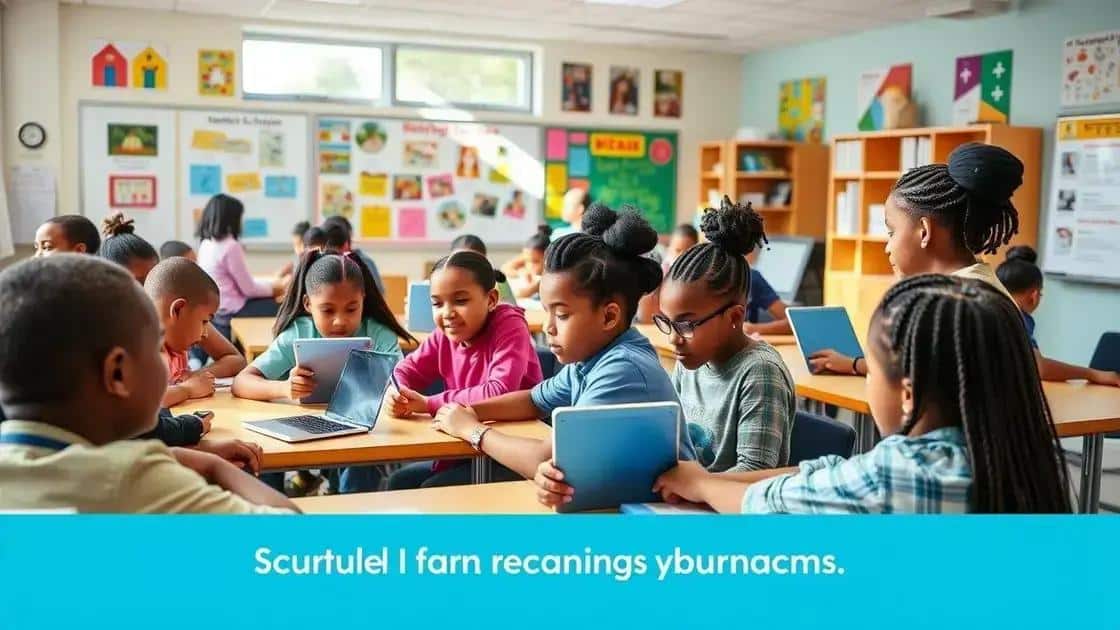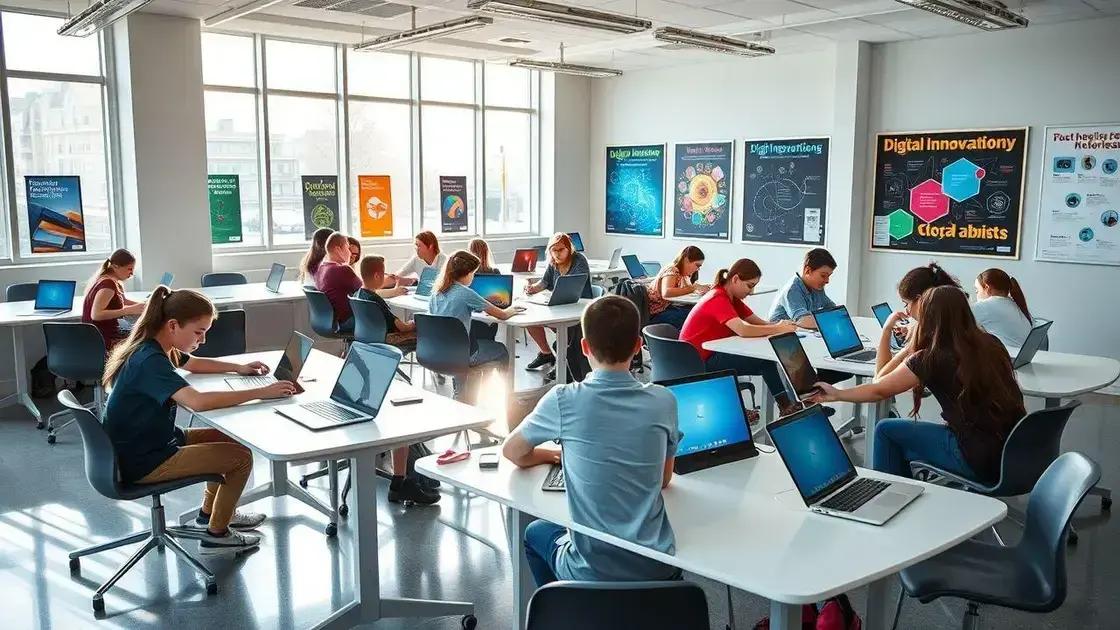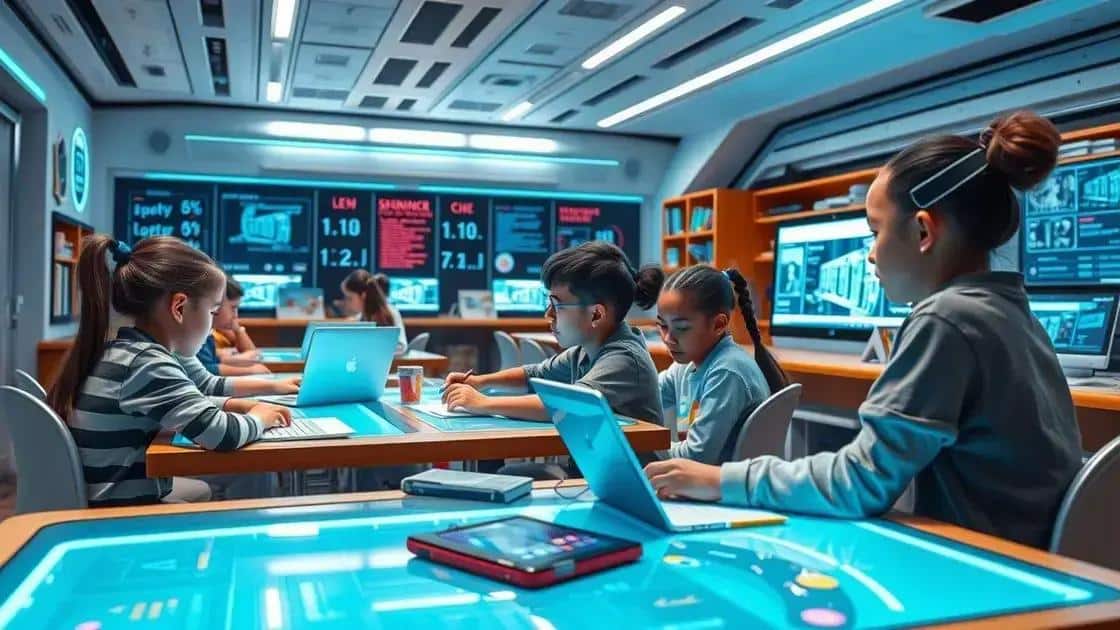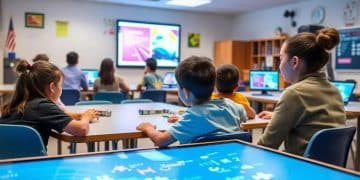Curriculum reforms: transforming education for future generations

Anúncios
Curriculum reforms involve updating educational practices to enhance student engagement and learning outcomes through technology integration, personalized learning, and addressing diverse student needs.
Curriculum reforms are reshaping the landscape of education as we know it. Have you ever wondered how these changes impact teaching and learning experiences? Let’s dive into the world of evolving educational practices and their significance for students today.
Understanding curriculum reforms
Curriculum reforms are essential for adapting education to meet today’s needs. As our world changes, so must the way we educate our students. Teachers and schools are rethinking the types of knowledge and skills required for success in a fast-paced, ever-evolving society.
What are Curriculum Reforms?
At its core, curriculum reform involves updating educational programs to better align with the goals of modern learning. This may include new subjects, revised learning objectives, or changes in teaching methodologies.
Key Components of Curriculum Reform
- Integration of technology in the classroom
- Emphasis on critical thinking skills
- Focus on real-world applications and problem solving
These components help students engage more actively in their learning processes. For instance, incorporating technology means students can leverage digital tools to enhance their understanding.
The Importance of Flexibility
Flexibility is a crucial aspect of any successful reform. Schools must be willing to adapt their curriculums to new educational trends and address the specific needs of their communities. What works for one school might not fit another. Therefore, a tailored approach is important.
Benefits of Understanding Curriculum Reforms
- Increased student engagement
- Improved academic performance
- Better preparation for future challenges
By understanding the importance of these reforms, educators can enhance their teaching and create a more effective learning environment. It allows them to foster creativity and innovation among students, preparing them for a complex world.
The role of technology in curriculum changes

Technology plays a vital role in curriculum changes today. It reshapes how educators deliver lessons and how students engage with content. With the rise of digital tools, learning has become more interactive and personalized.
Integrating Technology into the Classroom
When schools introduce technology, they open new pathways for learning. Teachers can use various platforms to enhance lessons, making them more engaging. For instance, digital presentations, interactive simulations, and online resources are now commonplace.
Benefits of Technology in Education
- Encourages collaboration among students
- Fosters critical thinking and problem-solving skills
- Provides access to a wealth of information
These benefits empower students to take charge of their own learning. They can explore topics deeply, work together on projects, and develop skills necessary for the future job market.
Challenges and Considerations
While the advantages of technology are clear, challenges exist as well. Not all students have equal access to devices or the internet, which can lead to disparities in learning. Schools must find ways to provide equitable opportunities for all students.
Moreover, teacher training is essential for successful implementation. Educators need support and resources to integrate technology effectively into their lessons. As teachers become more proficient, the overall impact on student learning becomes even greater.
In conclusion, the intersection of technology and curriculum reform is accelerating change in education. By embracing these opportunities and understanding their implications, schools can create a dynamic learning environment that prepares students for future challenges.
Challenges faced during curriculum implementation
Implementing curriculum changes is not without its challenges. Schools often face various obstacles that can hinder the effectiveness of these reforms. Understanding these challenges is crucial for developing strategies to overcome them.
Resistance to Change
One common issue is the resistance from teachers and staff. Many educators may feel comfortable with existing methods and hesitant to adopt new practices. This can slow down the implementation process and create tension within the school environment.
Resource Limitations
- Insufficient funding for new materials
- Lack of training and professional development
- Inadequate technology infrastructure
Without proper resources, even the best policies can fail. Schools need adequate funding to provide teachers with the tools and training they need to successfully adapt their curriculums.
Diverse Learning Needs
Another challenge is addressing the diverse learning needs of students. Curriculum reforms must consider the varying abilities and backgrounds of students, ensuring that all learners can thrive. This requires a flexible approach and ongoing assessment of student progress.
Overcoming these challenges requires collaboration among educators, administrators, and the community. By actively seeking input and feedback from all stakeholders, schools can develop solutions that enhance the reform process.
Furthermore, setting clear goals and benchmarks can help educators stay focused and motivated throughout the implementation. Regular reviews and adjustments ensure that the curriculum remains relevant and effective for all students.
Future trends in education and curriculum design

The future of education and curriculum design is bright and dynamic. Trends indicate a shift towards more personalized and flexible learning experiences. As we move forward, it’s crucial to understand the emerging trends that will shape the way students learn.
Personalized Learning
One significant trend is the emphasis on personalized learning. This approach tailors education to meet the individual needs of each student. Technologies such as adaptive learning platforms make it easier for educators to create customized lesson plans.
Project-Based Learning
- Encourages student engagement
- Develops critical thinking skills
- Promotes collaboration among peers
This type of learning allows students to work on real-world projects, encouraging them to apply what they learn in meaningful ways. It prepares them for challenges they might face in their future careers.
Integration of Social and Emotional Learning (SEL)
Another emerging trend is the integration of social and emotional learning. Schools are recognizing the importance of developing students’ emotional intelligence alongside their academic skills. This holistic approach helps students manage emotions, set goals, and establish positive relationships.
By focusing on both academic and emotional development, educators create a supportive environment that fosters overall well-being. This not only enhances academic performance but also prepares students to navigate life effectively.
Use of Artificial Intelligence and Data Analytics
Technology is advancing rapidly, and the use of artificial intelligence (AI) in education is on the rise. AI can help collect and analyze data related to student performance. This information allows educators to identify areas where students might need additional support, making instruction more effective and targeted.
As we look ahead, these trends will fundamentally change how curricula are designed and delivered. By embracing these innovations, schools can create learning environments that are more engaging, effective, and supportive for every student.
In conclusion, the landscape of education is evolving thanks to various curriculum reforms. Embracing technology, personalized learning, and social-emotional development are key to creating better learning environments. As challenges arise, understanding and addressing them will be crucial for successful implementation. By focusing on these trends, we can prepare students for a brighter future, equipping them with essential skills for their personal and academic lives.
FAQ – Frequently Asked Questions about Curriculum Reforms
What are curriculum reforms?
Curriculum reforms involve updating educational materials and methods to meet current learning needs and enhance student engagement.
How does technology impact curriculum changes?
Technology facilitates personalized learning and makes education more interactive, allowing students to access resources and tools that enhance their understanding.
What are common challenges in implementing curriculum reforms?
Common challenges include resistance from teachers, resource limitations, and addressing diverse learning needs among students.
What future trends should we expect in education?
Future trends include personalized learning, project-based learning, integration of social and emotional learning, and the use of artificial intelligence in education.






